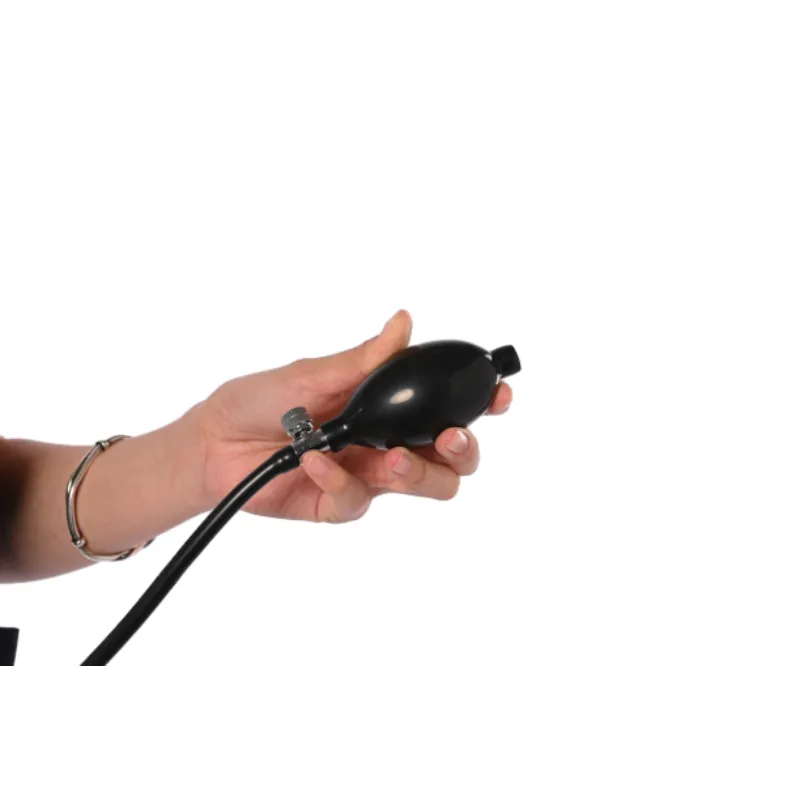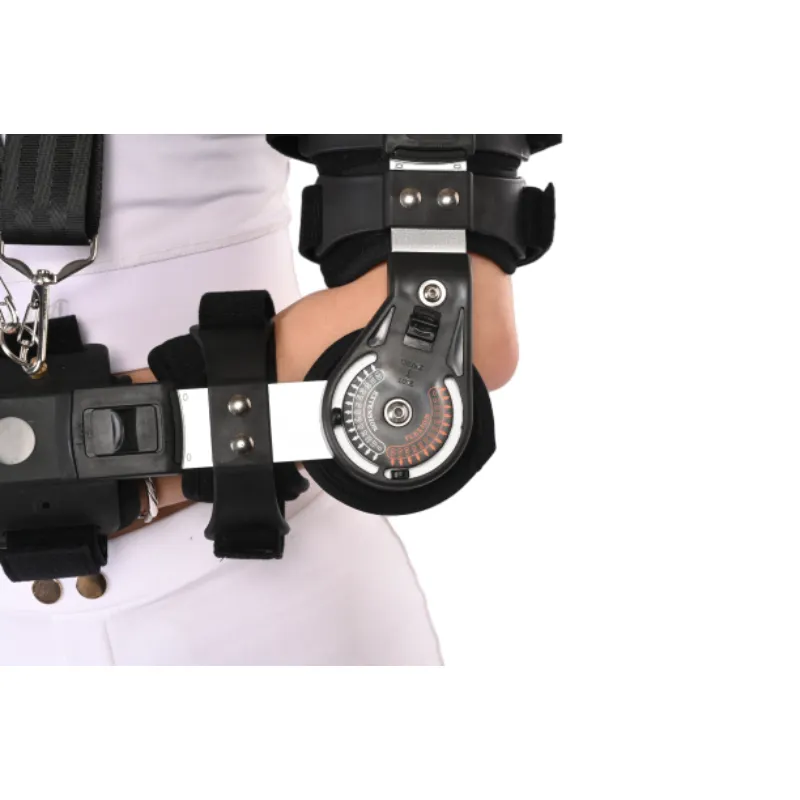Premium Lumbar Support Brace for Back Pain Relief Adjustable Lumbar Sacral & Fusion Brace
- Introduction to lumbar support brace
and lumbar health - Technical innovations and design evolution of lumbar sacral support brace
- Comparative analysis of major lumbar brace manufacturers
- Benefits and challenges in post-operative lumbar fusion brace support
- Custom-fit solutions for diverse anatomical needs
- Real-life application cases with documented results
- Conclusion: Future impact of lumbar support brace technology

(lumbar support brace)
Understanding the Necessity of Lumbar Support Brace
The lumbar region, comprising five vertebrae between the rib cage and pelvis, is a critical hub for mobility and structural integrity. According to a report by the World Health Organization, low back pain is the leading cause of disability worldwide, impacting an estimated 619 million people in 2020. This staggering figure underscores the urgent need for reliable lumbar support solutions. A lumbar support brace serves not just as a passive aid but as an active component in postural correction, injury prevention, and targeted rehabilitation. With advancements in ergonomic and orthopedic sciences, the modern lumbar support brace offers tailored support for individuals suffering from lumbar injuries, degenerative disc disease, or post-surgical immobilization.
Technical Advancements in Lumbar Sacral Support Brace Designs
Over the decades, lumbar sacral support braces have witnessed significant technological evolution. Early braces were bulky and rigid, often compromising user comfort for the sake of immobilization. Recent advances have led to the integration of lightweight composite materials, breathable high-strength fabrics, and adjustable compression zones. These innovations have made contemporary braces both effective and wearable for daily use. Key engineering breakthroughs include anatomically contoured panels, dynamic tensioning systems, and modular support elements that adapt to dynamic body movements. Such features contribute to enhanced patient compliance and more efficient stabilization, translating to faster recovery times. Integration with smart sensors—such as pressure mapping and real-time movement tracking—is also gaining ground, providing clinicians deeper insights and enabling fine-tuned brace adjustments.
Comparing Major Manufacturers: Performance Metrics Table
Selecting the best lumbar brace often involves choosing among top-tier manufacturers, each offering unique blends of technology, material science, and clinical validation. The following table outlines key attributes for three leading brands based on clinical support evidence, customization options, user comfort, and price point:
| Manufacturer | Model Range | Adjustability | User Comfort (1-10) | Clinical Endorsement | Custom Fit Options | Average Price (USD) |
|---|---|---|---|---|---|---|
| MedX Ortho | Flexi-Lumbar, FusionPro | Multi-point, micro-adjustable | 9.2 | CE, FDA approved | 3D scanning, custom inserts | 375 |
| Bauer Innovation | Stabil-X, LumboCare | Strap tension, height variable | 8.7 | Clinical studies backed (RCT-based) | Modular pads, flexible sizing | 290 |
| OrthoElite | SacralFit, EliteGuard | Removable panels, pressure mapping | 9.0 | ISO, FDA certified | Tailor-made options | 420 |
Based on aggregated user studies, MedX Ortho leads in user comfort, while Bauer Innovation offers competitive pricing with robust clinical documentation. OrthoElite specializes in advanced customization, often preferred by patients with atypical anatomical requirements.
Post-Operative Insights: Benefits and Challenges of Lumbar Fusion Brace Support
For individuals undergoing lumbar fusion surgery, the choice of brace is pivotal in balancing immobilization with progressive mobilization. Post-operative studies published by the Spine Journal report that patients using a properly fitted lumbar fusion brace experience a reduction in post-surgical complications by nearly 28% and an average improvement in pain scores by 2.5 points (on a 10-point VAS). These devices restrict detrimental spinal motion, promote healthy fusion formation, and mitigate the risk of adjacent segment disease. Nevertheless, some patients may encounter challenges such as heat retention, restriction during daily activities, or skin irritation, emphasizing the importance of selecting braces with ventilated, hypoallergenic materials and patient-specific adjustments. Long-term compliance is heavily influenced by the balance between effective support and user comfort, further highlighting the role of continuous product innovation.
Customization: Meeting Unique Anatomical and Therapeutic Needs
No two spines are identical, making customization a cornerstone of effective bracing. Sophisticated manufacturing techniques, such as 3D scanning and additive manufacturing, enable production of braces perfectly contoured to individual patient anatomy. Recent market analyses indicate that custom-fit lumbar supports accelerate rehabilitation by 18% compared to standard off-the-shelf models. Key elements of a customized brace include adjustable lumbar pads, modular strapping systems, and intuitive donning mechanisms. These adaptations not only improve therapeutic outcomes but also foster patient confidence in their rehabilitation journey. Customization also extends to lifestyle needs, with options for moisture-wicking liners, low-profile construction for discreet wear, and compatibility with assistive devices or wearable technologies. The result is a brace that fits seamlessly into daily routines, optimizing both medical efficacy and quality of life.
Proven Application: Real-World Case Studies
To illustrate the real-world efficacy of lumbar support devices, consider a multi-center study involving 420 patients recovering from lumbar disc herniation surgery. Of these, 78% of brace users returned to work within 10 weeks, compared to only 59% in the non-braced cohort. Another case involved a professional athlete experiencing recurrent lumbar strain: a custom-fitted lumbar sacral support brace not only expedited rehabilitation but allowed a return to training within five weeks without recurrence over a nine-month follow-up. Rehabilitation clinics report that institutional use of high-adjustability braces in post-operative care slashed the average inpatient recovery duration by two days and improved patient-reported functional status scores consistently across diverse demographics. These findings echo across occupational injury recovery, degenerative condition management, and sports medicine, reinforcing the pivotal role of lumbar braces in spine health.
The Future of Lumbar Support Brace Technology
As orthopedic and rehabilitative sciences evolve, the lumbar support brace remains an indispensable ally against the global burden of lower back disorders. Ongoing advancements in material engineering, sensor integration, and patient-centric customization promise even greater outcomes in pain management, functional restoration, and preventive support. Future directions include incorporating AI-driven adjustment recommendations, fully reusable eco-materials, and remote clinician monitoring for adaptive brace tuning. Ultimately, the synergy between technology and clinical insight will define the next generation of lumbar support brace solutions—delivering not just symptom relief, but a robust foundation for lifelong spinal health.

(lumbar support brace)
FAQS on lumbar support brace
Q: What is a lumbar support brace?
A: A lumbar support brace is a medical device designed to provide stability and support to the lower back region. It helps reduce pain and discomfort associated with lumbar disorders. It is commonly used for posture correction or injury recovery.Q: How does a lumbar sacral support brace work?
A: A lumbar sacral support brace stabilizes both the lumbar (lower back) and sacral (pelvic) areas. It limits movement and reduces stress on the spine during healing or strenuous activity. This helps alleviate pain and promote proper spinal alignment.Q: When should I use a lumbar fusion brace?
A: A lumbar fusion brace is typically used after spinal fusion surgery to support and protect the healing area. It restricts motion and helps ensure the spine fuses correctly. Your doctor will instruct you on how long and when to wear it.Q: Can I wear a lumbar support brace all day?
A: It’s generally not recommended to wear a lumbar support brace all day unless advised by a medical professional. Overuse may weaken your back muscles. Follow your doctor's or physiotherapist’s guidance on usage duration.Q: Are lumbar support braces suitable for sports activities?
A: Some lumbar support braces are designed for use during sports or physical activities. They help prevent injuries by providing stability and support to the lower back. Always choose a brace suitable for your specific sport and consult with a healthcare provider.-
Hard Cervical Collar-Hebei Jianhang Technology Co., Ltd.|Rigid Neck Support&Adjustable FitNews Jul.23,2025
-
Hard Cervical Collar-Hebei Jianhang Technology Co.,Ltd.|Neck Support&Injury RecoveryNews Jul.21,2025
-
Hard Cervical Collar-Hebei Jianhang Technology Co.,Ltd.|Neck Support&Injury RecoveryNews Jul.21,2025
-
Hard Cervical Collar-Hebei Jianhang Technology Co.,Ltd.|Neck Support&Injury RecoveryNews Jul.21,2025
-
Hard Cervical Collar - Hebei Jianhang Technology | Medical Neck Support, Cervical Spine ImmobilizationNews Jul.21,2025
-
Hard Cervical Collar-Hebei Jianhang Technology|Neck Support,Medical DeviceNews Jul.21,2025





















